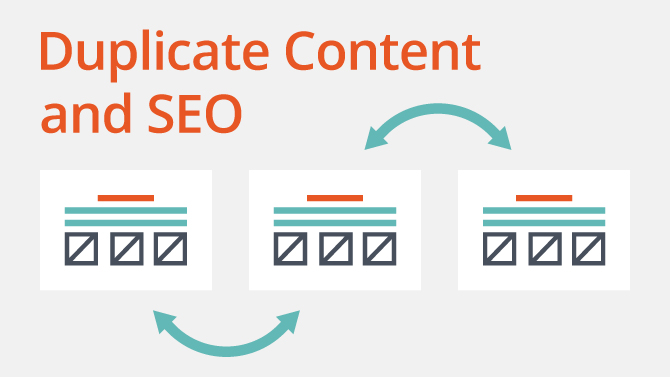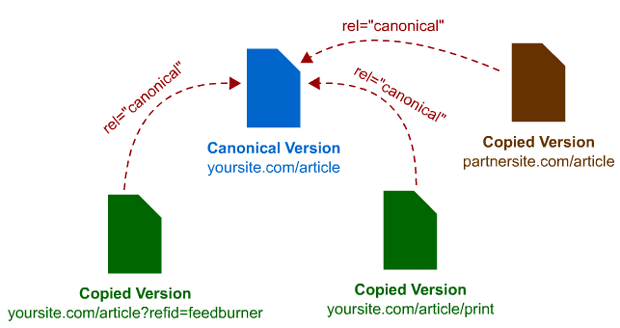Table of Contents
- 1 A Few Things to Be Validated While Auditing E-Commerce Sites (for SEO)
- 1.1 How to Be “Perfect” (In a Sense!)
- 1.2 Duplicate Content – Why is it Such a Big Deal?
- 1.3 How Do I End Up Using Duplicate Content?
- 1.4 What is a Canonical Tag?
- 1.5 Auditing Your Backlinks
- 1.6 Creating “Categorized Pages”
- 1.7 Communication is Key
- 1.8 Meta Tags & Meta Descriptions
- 1.9 Audit of Your “Online Reputation”
- 1.10 All in All: You Have the Ability to Create the Perfect E-Commerce Site!
A Few Things to Be Validated While Auditing E-Commerce Sites (for SEO)

How to Be “Perfect” (In a Sense!)
Your website is pretty much the final stand when it comes to the battle being fought (the conversion battle, of course) – and that’s why you’ve got to make sure that it’s being accounted for in the right light. When you audit an E-commerce site, you’re going to see exactly where everything is put in place; as well as how effective these placements happen to be. Today, I’m going to speak upon the different aspects of E-commerce websites, and how you should be auditing them in your SEO process.
You can’t have a lackluster SEO process, that’s pretty much one of the bonafide ways you can ensure your companies’ demise. If you don’t have a strong stance in regards to your SEO, there are going to be a lot of cookie crumbs left at the table. A site audit is exactly what it sounds like, looking at an overview of your E-commerce page and making changes where they are necessary.
The website auditing process can be a lengthy one, but it’s one that you must never avoid. Without properly identifying the problems, there’s no way you’ll be able to completely rid your website of them entirely either. Some problems will seem as if they are miniscule, and others are going to seem like they can completely break the way things have been working. Whatever the case may be, just be ready to make at least a few different changes to your E-commerce website.
Duplicate Content – Why is it Such a Big Deal?

Duplicate content is one of the worst things you could be putting on your E-commerce site, or any website that you want to have some SEO-power. Duplicate content is literally one of the highest negatively impacting E-commerce website problems you could be hit with, and that’s why the content going on your website needs to be curated and posted by true professionals. The people that are looking to purchase your products usually only interact with the descriptions themselves. Product descriptions are a crucial component to any successful E-commerce company, and that means you need to be taking a look at them when conducting an audit of your own. Can you imagine what you would think, if you went out to dinner and kept getting the same plate over and over? Regardless of what you ordered, or even how much money you had paid – it’s always going to be the same dish. That’s what duplicate content is like.
It’s a big deal because Google said so, and whatever Google says, it happens. Google is pretty much the leading search-engine organization to be considered, especially since they have an abundance of different technological advancements planned for us in the future. Every single E-commerce website is essentially built to please the system known as Google – and Google has stood very strong on their stance in regards to duplicate content. They don’t want high-ranking websites to show off duplicated content, so SEO penalties are being dished out the keep things balanced.
SEO penalties are really tough to break away from, and they could even completely abolish an E-commerce project before it truly gets off of the ground.
Consistency: Creating a “Pleasant Pattern”
When people are surfing through your website, you should be trying to keep things as consistent as possible. This means that all of the font being used needs to stay the exact same through and through – unless you’re looking to highlight a specific tid-bit of information. You should always have consistent imagery and branding throughout your pages, as that allows people to have a visual aid to their purchasing needs. Every product should have a high resolution picture, and they should always be of the proper product (there are cases where an E-commerce site is looking to list thousands of products, and the pictures don’t always match up).
Whenever you’ve got a button linked to make a purchase, or any sort of CTA (call-to-action) button on your E-commerce website, it needs to stay the same. You should also be looking at the vibe/tone of your websites’ content, as it needs to stay the same as well. It isn’t very professional to have one of your E-commerce pages talking in a joking manner, whereas another is going to be much more serious and straightforward. Think of what tone you want to run with, and stick to it!
Clueing in on consistency is a critical endeavor to be a part of, so ask yourself; are my pages consistent enough to:
- Show every single font/color in the exact same manner throughout every single page?
- Are the buttons and purchase links properly placed (and remain consistent) on your product pages?
- Whenever you have a promotion, is it properly displayed and accounted for?
- When you show some sort of credit card icon for payment, can the customers actually use those options?
How Do I End Up Using Duplicate Content?
It’s really simple – somebody provides you with it (or you just accidentally implant some within your E-commerce page). For example, a lot of themes and other types of E-commerce websites won’t have individual product descriptions for their sales. This is a must, as it will not only add unique content onto your page, but it will also give consumers a better sense of what they’re trying to purchase. That pretty much applies to anything else content-related within your website; never leave it at the default value. Even if you’re only changing two or three words, sometimes that’s all you need – but it’s a good idea to get into the habit of re-writing things completely.
Sometimes, you may just link the wrong page to a specific URL – giving Google the though that you’re using duplicated content. Be sure to go through every single page on your E-commerce website and identify the different phrases of content within. It’s important that every single page is 100% unique, or else you won’t be dealing with a powerhouse SEO process (which is something you always want to be doing, mind you).
A quick overview:
Product descriptions need to be accounted for and unique at all times. These are the items that you’re trying to sell, and a lack of descriptions (or, in many cases, completely unique descriptions) is just a lack of professionalism.
Make sure that you’re using your robot.txt to hide any unwanted pages from Googles’ prying eyes. They have a way of finding almost everything, whether it be positive or negative – the robot.txt will allow any duplicated (or seemingly duplicated) pages to avoid the crawling process.
Use markers (like a “^”) when you see duplicated content, and gather up all of the pages that are a problem – that way, you’re able to make one massive edit (as opposed to an abundance of little ones). You could miss out on things otherwise.
What is a Canonical Tag?

Have you ever noticed that some portions of your website need to stay the exact same, almost every single time? That’s where Canonical Tags will come into play, as it’s pretty much identifying permanent parts of the E-commerce site to Google. This allows Google to overlook these pages as a problem, but it also allows you to get the most out of your website. If you have a webpage being pointed toward a specific URL, and then proceed to put an abundance of different pages on that exact same URL, there’s going to be an issue. Google will split all of the traffic that you receive between the abundance of pages, and the authority power behind your E-commerce website will plummet; almost immediately.
Google will index all of your pages as a duplicate, and thus, you’ll be dealing with the nasty penalties that people can be dealt. When you use Canonical Tags, Google will not only ignore these permanent pages – but you won’t need to worry about getting flagged/penalized in the future (due to these particular pages, of course).
Getting Canonical Tags WRONG
A lot of the readers currently delving into the heart of this matter aren’t going to understand what Canonical Tags are, so I’m going to clear the air really quickly. It’s essentially like tagging the pages you want Google to index as a permanent residence of your E-commerce websites; and it just so happens to be incredibly simple.
EXAMPLE: http://www.coolbeans.com/ & http://www.coolbeans.com/home.aspx (both the same page, but two different URL’s)
It’s relatively lengthy to explain the entire Canonical Tagging process, so feel free to Google that on your own time. Google says that they try their hardest to ensure that the best possible URL is being indexed, but this is the best way to ensure the results you’re craving come to life.
Auditing Your Backlinks

You need to manage your backlinks in a sense that they are your spam folder – you’re always going to get a spam, and it’s up to you to completely delete it for good. If a backlink has been built to point towards your website, and it’s acting in a negative manner, you’ve got to disavow it. This means that Google will disregard this link when it crawls your website, and the negative impact of said link won’t be shared with your E-commerce page.
The links are pretty much a way to strengthen your SEO presence, especially when it comes to E-commerce websites – this means that there’s a higher chance of people purchasing a product through your pages. By auditing your backlinks, and figuring out which ones are going to be on the “disavow list”, you’ll be making sure that your E-commerce page always has its best foot forward.
Backlinks to look out for would be:
- Anything related to sex/sexually enhanced pills – that is, unless, your E-commerce website happens to be selling products of the same type.
- Incredibly spam-like links, that have terrible TLD’s associated with them or even just bad content in general.
- Any sort of content that is trying to plagiarize any sort of company/ product, let alone a very large one (like a fake Facebook advertisement pointing towards your E-commerce site).
- Anything that you wouldn’t place there yourself, or even just have associated with your E-commerce page.
Creating “Categorized Pages”

An E-Commerce website needs to have categories displayed at all times, because there’s going to be a lot of different products to sift through (both in the manner in which they are used, the price and even the manufacturing brand). The buyers need to be able to find their way around the website, and that comes in the form of categorized pages. People will be able to search for specific products that they’d like to see, as well as specific price ranges and such.
While it’s important to think about this portion of your E-commerce website, it does allow for a much higher chance of developing duplicate content. The more pages that you need to be dealing with, the more risk you’ll be taking duplicate content-wise. When you’re using filters and such, by Canonically Tagging the “view all” filter, you’ll be indexing the proper page for Google. With that being said, there’s always a chance that going through the “category paging process” confuses Google a little bit.
That’s usually why people tend to completely build up their websites before letting them go live, and fixing things in the middle of a project push is never easy to do.
For the Sake of the Consumer
As a consumer, you’re always going to want the most efficient way of going through the shopping process. This means that you want a clean cut website, that also offers up an abundance of features and searching options.
Communication is Key

Communication is a big factor when it comes to conversion rates, and that means you’ll have to integrate social media platforms onto your E-commerce page. This gives people the opportunity to share their favorite products with friends and family, or anybody else for that matter; it also gives your website another opportunity to reach a broader audience. Organic growth is the best type of growth, and that’s what social media can help deliver to you – it’s only a matter of actually setting everything up. From Twitter to Instagram, there are companies out there that make sure their social media presence is relatively large. It’s 2016, and your marketing campaigns need to reflect the technological changes that our society is going through.
Think about how easy it is for a customer to navigate through your website, or even just how hard it is to actually go through with a purchase. It’s nice to have a website that looks fantastic, but when a customer can’t even make sense of product descriptions (or anything else related to your page), there is going to be a lack of sales. Communication is going to equal sales, regardless of what industry you happen to be working in. Customers don’t want to waste time on your website, they want to see the product they’re looking for in a timely manner. If they don’t see it almost immediately, odds are you won’t be making a sale. Use CTA’s (call-to-actions) to your advantage, and be precise with the content that you’re posting on your pages. Communication is a two-way street, but you still have to hold up your end of the bargain.
Take a look at your website, does it have the necessary traits? Can it:
- Allow a customer to figure out what industry your E-commerce page is based in, almost immediately?
- Keep the message short and simple – easy enough for anybody to understand?
- Direct the customers through the steps of making a purchase properly?
Meta Tags & Meta Descriptions

Meta descriptions are essentially the portion of your website that are visible on the results pages of search engines (or, if you want to get fancy and use acronyms, SERPs). This means that almost every single person who comes across your website is going to read it – as Google (and other types of search engines) account for a lot of the traffic that your E-commerce page is going to see. When you do a poor job on your meta tags, you’ll notice it within your conversion rates. People don’t want to visit a website that doesn’t have a professionally worded meta description – it just doesn’t seem right.
Meta descriptions should be contained and short (but sweet) – you need to make it so that the consumer really wants to visit your page after reading the small excerpt. Appeal towards the conversion side of things, and use words that will have consumers peaking their curiosity levels. You want people to think that you’ve got exactly what they are looking for, and that’s what gets them to click.
Every single one of your pages should have a specific meta description, as well as unique meta title tags. If you aren’t completely aware as to how well your meta tags are being implemented, you could always make use of the “Google Webmaster” tool. It will let you know if you’ve got any duplicate meta tags to get rid of!
There are a variety of different types, in regards to meta tags; do a bit of research and make sure that you’re using the proper type.
Audit of Your “Online Reputation”

E-Commerce pages are only going to be worth as much as their online reputation allows them to be. There are plenty of ORM (Online Reputation Management) services out there that will make sure you’re in good standing; but that isn’t always the most obvious option. Try and figure out how to track every single review being given on your website, and then use that to your advantage – there are tons of different website applications and such that allow you to add reviewable products to your E-Commerce page.
Listen to the feedback that’s been given to your products, and try and better the website itself. Not only that, but try and remove products that are for sale in which people post negatively themed reviews. If a product isn’t producing well, and the people are letting you know about it, odds are your online reputation is going to be at stake. Appeal towards your consumers in a light that makes you out to be caring and courageous – unafraid to change something it isn’t working out.
Your online reputation is going to require a lot of work, especially when you want to make sure people understand how confident and efficient your E-commerce website is built to be. Your online reputation is going to be based off of many different things,
- Respond to every single review you can! This gives off a professional and personal vibe in regards to your website. Not only that, but if some isn’t satisfied with your service as a whole, it will be an opportunity for you to promise them better service in the future (and hopefully, saving a customer in the process).
- Make sure to always communicate your promotions and such through social media outlets, or anywhere else that your customers will be able to see it – this is one of the best ways to become a professionally established brand online.
- Remove any sort of negative press from your marketing campaigns, even if it happens to be unintentionally “bad”. We’ve all been there, just fix the issue as soon as you can and everything will be alright.
Without a trustworthy aura and presence online, your E-commerce site isn’t going to get very far. If you want to build an empire of your own, one product at a time, it’s going to take some proper online reputation management.
All in All: You Have the Ability to Create the Perfect E-Commerce Site!
Most people audit their E-commerce websites and don’t think about the information being given to them, at least, not all of it. This article should keep you aware of the many different things that take part within an E-commerce website audit, and that’s not even the entire book on that matter. There are still plenty of other things to consider, like your local SEO endeavors or even just the kind of customer service that you’re providing the consumers (as in, live customer service).
Running an E-commerce page of your own is relatively difficult, but once you’ve gone through the auditing process, you should have a clearer vision on what’s necessary to succeed. If you have to expand your brand in a global manner, the SEO power of your page is going to speak volumes towards future investors. It’s 2016, and that’s allowed for a lot of different companies to work their way into the spotlight. You can do the exact same thing, it’s just a matter of whether you’re willing to work as hard as everybody else has.
Don’t let anybody tell you that your E-commerce website is perfect after the first set-up process. Google is constantly changing the way SEO-power is being accounted for – which means a well-timed E-commerce SEO audit is more than reasonable (at any rate).






